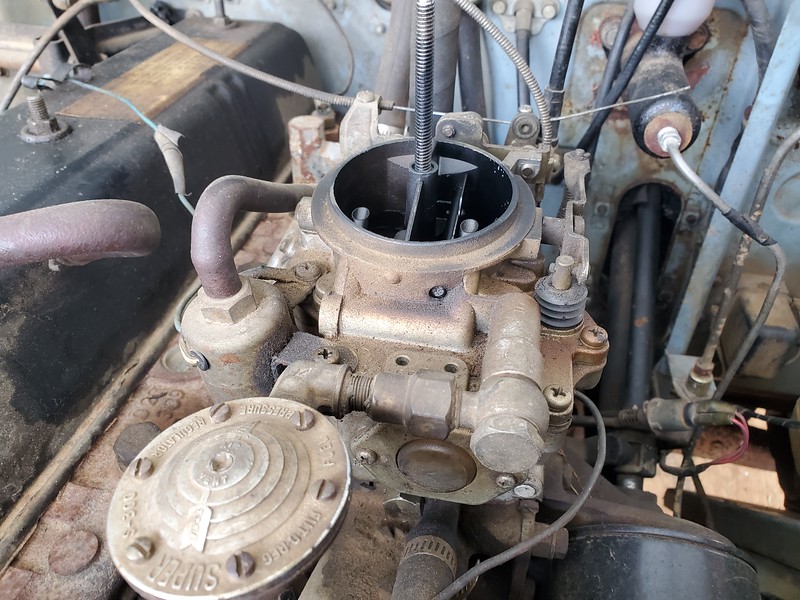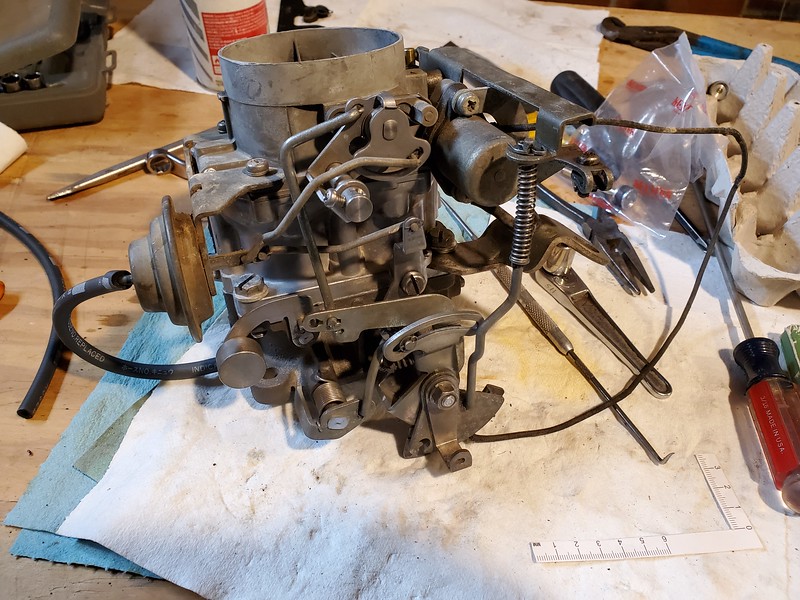Hi everyone!
I found a pretty good deal (or what I thought was a good deal) on an early Aisan 2-barrel to replace the rochester that came on my 40 from the previous owner. I was cleaning it up and soon realized that it isn't ported for vacuum advance. and after some reading on the forms, it seems that nobody does that for these early 2 barrels. I saw what looked like might be a suitable existing vacuum circuit that I could maybe use as it does not really seem to do much. I have attached some pictures of the carb and what I am talking about below, maybe I could pop out the small metal "rivet" and replace it with a port for the vacuum advance? I have seen something similar on some of the old crowns which seem to have a similar carb.





I found a pretty good deal (or what I thought was a good deal) on an early Aisan 2-barrel to replace the rochester that came on my 40 from the previous owner. I was cleaning it up and soon realized that it isn't ported for vacuum advance. and after some reading on the forms, it seems that nobody does that for these early 2 barrels. I saw what looked like might be a suitable existing vacuum circuit that I could maybe use as it does not really seem to do much. I have attached some pictures of the carb and what I am talking about below, maybe I could pop out the small metal "rivet" and replace it with a port for the vacuum advance? I have seen something similar on some of the old crowns which seem to have a similar carb.



 There are plenty of articles online that explain the advantages of ported vacuum over mani vacuum, and the disadvantages of manifold vacuum.
There are plenty of articles online that explain the advantages of ported vacuum over mani vacuum, and the disadvantages of manifold vacuum.